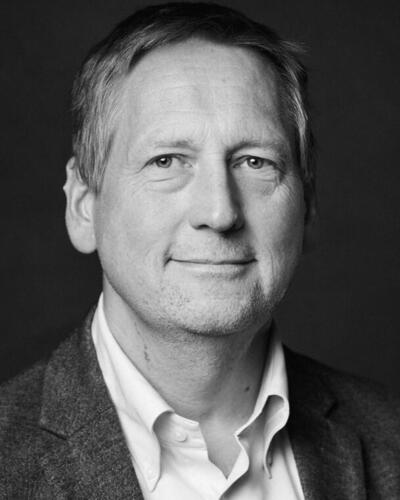Researching Arctic indigenous peoples’ portrayals of themselves
In the Visions of the Artic project, professor of anthropology Knut Mikjel Rio at the University Museum of Bergen will research Arctic indigenous peoples’ portrayals of their own history, compared to the nation states’ portrayal of the minority populations.

Main content
"So I am hereby sending you a box addressed to the Bergen Museum. It contains three plaster casts taken from Lapps who are alive here in Christiania.” Conservator Ludvig Kristian Daa, Christiania, 1862
As a part of Rio’s project, the University Museum of Bergen has exhibited three plaster casts of Sami prisoners held in Kristiania prison. The busts were cast in 1853 by Guidotti, an Italian artist and mould maker living in Kristiania.
“The history of the three prisoners tells us a lot about the systematic colonisation of Sami territories,” Rio says.
Watch a film about the issue here:
The plaster casts show:
- Nils Pedersen, from Karasjok, was 43 when he was arrested in 1849. He had four children. He was also sentenced to serve three and a half years in prison for stealing reindeer.
- Mathias Jacobsen Hætta, from Kautokeino, was 30 when he was arrested in 1851. He was given a 3-year sentence for "unlawfully obstructing a normal church service”. In addition, it was stated that he was "very defiant and refused to work until he had been beaten." He was also one of those who was sentenced for instigation against the church in Skjervøy, and was among those who would rather follow his own faith within Læstadianism. Mathias was at Akerhus when the Kautokeino rebellion took place in November 1852. He was the older brother of the “rebel leader,” Aslak Hætta, who was beheaded in 1854. Mathias was married to Ellen Skum, who was also sentenced to death, but was pardoned and released in 1867.
- Peder Olsen Rig, from Polmak, was 35 when he was arrested in 1852. The prison records state that he received three and a half years in prison for stealing a reindeer calf, which he slaughtered because he had no food.
These casts were given high priority at the newly-established Ethnographic Museum in Kristiania in 1853.
“It’s obvious that the present time’s recent events at Skjervøy and Kautokeino and the killings of people from the civil service and business were frightening. The Sami resistance became more widely known and took on a more serious reputation, and the newspapers constantly printed stories about the terrible Læstadians.”
“Perhaps that was the reason the casts were made in 1853? Perhaps exhibiting the faces of these murderous criminals inspired mixed feelings of horror.”
Another reason may have been that as there were Sami imprisoned in Kristiania, it was easier to obtain portraits of the ‘primitive’ people. Skull measurement was common practice for determining the appearance and temperament of native populations.
Seven copies of the heads were made so that they could be traded with or sold to other museums. These plaster portraits were highly coveted, even outside Norway. This included an order placed with the museum in Kristiania by the Great Exhibition held at Crystal Palace in London. It was also easy to sell these plaster heads to the Bergen Museum over ten years later.
State power and social Darwinism
In the University Museum of Bergen’s collection of Sami cultural heritage, there are some objects that were purchased for the museum from 1825 and up to 1917.
“At the time, interest in Sami culture was strongly influenced by social Darwinism and racial ideology,” Rio says.
During this period the Sami people were treated as a primitive people who belonged to the past, and researchers worked hand in glove with the church and the state in treating the Sami people as being under-developed and primitive. For example, the Museum Director in Oslo, Yngvar Nielsen, wrote:
“This race has not been easily able to raise itself to a higher grade of civilisation; only to a certain level and then they stop, since they have a deep-seated resistance to this culture which they are unable to overcome.”
Towards reconciliation
Now, however, we are in a reconciliation process, where a truth commission will examine and convey the injustices committed against the Sami.
“An important part of this work is to return Sami cultural heritage from museums in the south to the Sami museums, and also to consider how we convey knowledge about the Sami today. It’s about thinking about the abuses and injustices of the past,” Rio says.
“Current important issues for the Sami Parliament of Norway include self-determination and sovereignty, the right to define their own identity and history and, not least, the right to manage tangible evidence of this history,” he points out.
One question is whether Sami objects belong in a museum in Bergen or other places outside of Sami areas.
